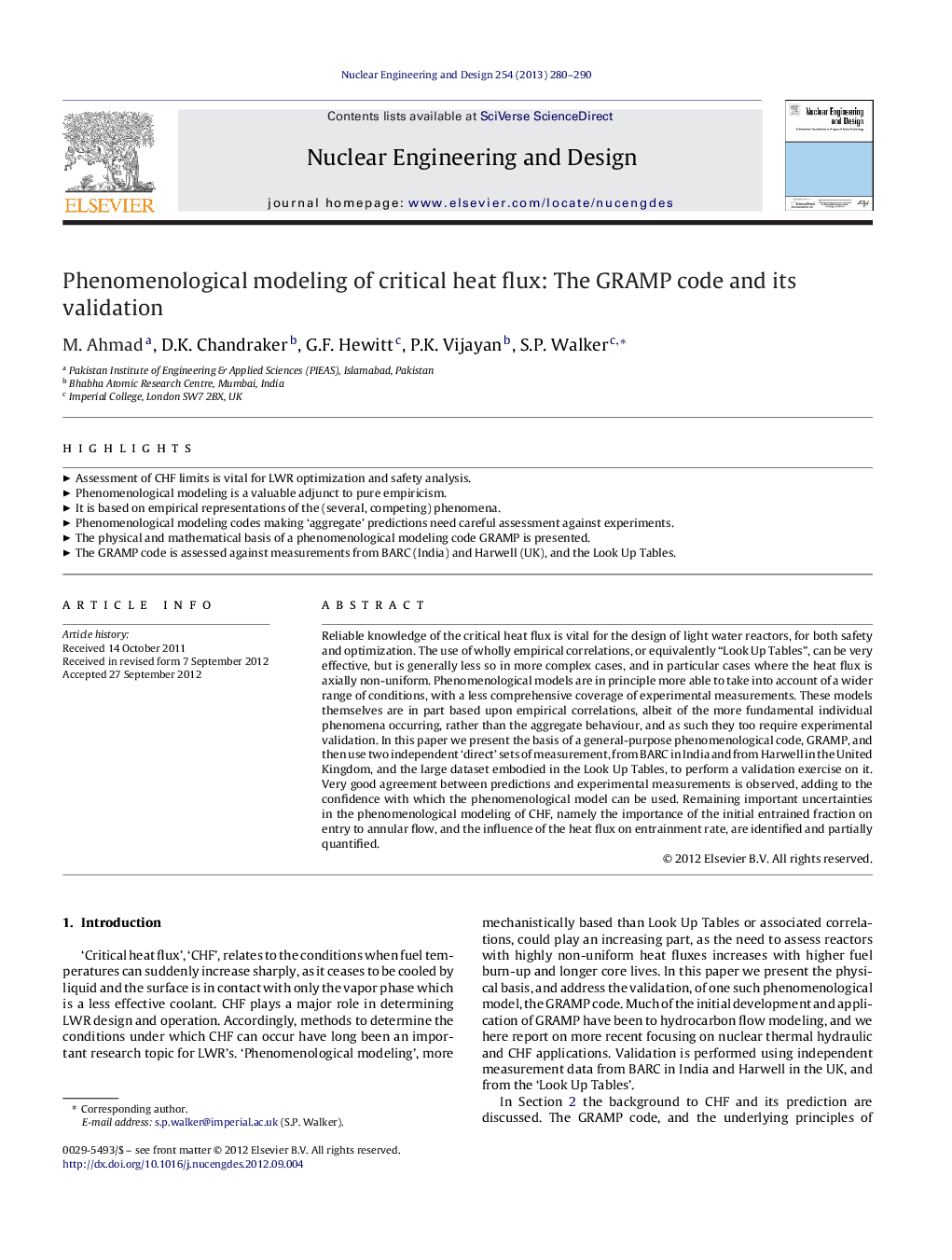| کد مقاله | کد نشریه | سال انتشار | مقاله انگلیسی | نسخه تمام متن |
|---|---|---|---|---|
| 296814 | 511742 | 2013 | 11 صفحه PDF | دانلود رایگان |

Reliable knowledge of the critical heat flux is vital for the design of light water reactors, for both safety and optimization. The use of wholly empirical correlations, or equivalently “Look Up Tables”, can be very effective, but is generally less so in more complex cases, and in particular cases where the heat flux is axially non-uniform. Phenomenological models are in principle more able to take into account of a wider range of conditions, with a less comprehensive coverage of experimental measurements. These models themselves are in part based upon empirical correlations, albeit of the more fundamental individual phenomena occurring, rather than the aggregate behaviour, and as such they too require experimental validation. In this paper we present the basis of a general-purpose phenomenological code, GRAMP, and then use two independent ‘direct’ sets of measurement, from BARC in India and from Harwell in the United Kingdom, and the large dataset embodied in the Look Up Tables, to perform a validation exercise on it. Very good agreement between predictions and experimental measurements is observed, adding to the confidence with which the phenomenological model can be used. Remaining important uncertainties in the phenomenological modeling of CHF, namely the importance of the initial entrained fraction on entry to annular flow, and the influence of the heat flux on entrainment rate, are identified and partially quantified.
► Assessment of CHF limits is vital for LWR optimization and safety analysis.
► Phenomenological modeling is a valuable adjunct to pure empiricism.
► It is based on empirical representations of the (several, competing) phenomena.
► Phenomenological modeling codes making ‘aggregate’ predictions need careful assessment against experiments.
► The physical and mathematical basis of a phenomenological modeling code GRAMP is presented.
► The GRAMP code is assessed against measurements from BARC (India) and Harwell (UK), and the Look Up Tables.
Journal: Nuclear Engineering and Design - Volume 254, January 2013, Pages 280–290